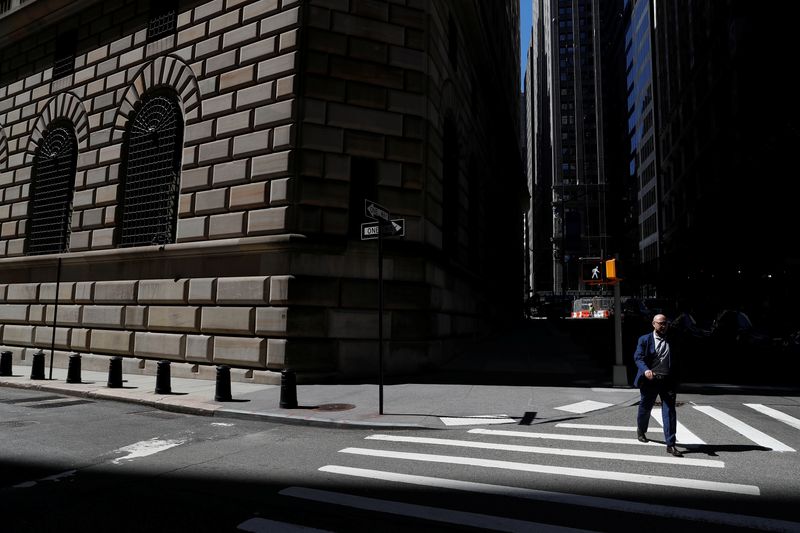By Michael S. Derby
NEW YORK (Reuters) -The U.S. central bank faces no imminent pressure to stop the contraction of its holdings of Treasury bonds and mortgage-backed securities, data released by the New York Federal Reserve suggested on Thursday.
The regional Fed bank reported that its recently launched Reserve Demand Elasticity measure essentially held steady as of Jan. 7 at -0.04 relative to recent readings and said "the estimate suggests that reserves remain abundant."
For the Fed, an abundant reserve level means that liquidity in the financial system remains strong enough that it can continue to shrink its balance sheet by allowing some of the Treasury and mortgage bonds it owns to mature and not be replaced.
This process, which began in 2022, is called quantitative tightening, or QT, and it has allowed Fed holdings to go from a peak of about $9 trillion in the summer of 2022 to the current level of just under $7 trillion.
Fed officials have been uncertain how much further they'll be able to cut the holdings. But seeking to avoid a replay of the events of the fall of 2019, when the last chapter of QT unexpectedly withdrew too much liquidity and forced central bank interventions, they have taken lessons from that episode.
The Reserve Demand Elasticity measure helps measure liquidity conditions and appears to front-run shortages with robust lead times. The Fed has also slowed the pace of the QT drawdown and also put in place a facility called the Standing Repo Facility, which provides fast cash to eligible banks, in a bid to quickly address any market kinks.
Fed officials allow that the outlook for QT is uncertain but they appear for now to see no need to change gears.
'ENDLESSLY DEBATABLE'
Transitioning through the end of 2024 into 2025 "went very smoothly," New York Fed President John Williams told reporters on Wednesday, referring to what can be a turbulent period for markets. He said he's "not seen any particular signs" reserve levels have contracted to a point where the Fed would have more difficulty managing the setting of the federal funds rate, its main tool for affecting the path of the economy.
"I don't have a prediction" of when QT will conclude, Williams added, while noting the central bank has taken steps to reduce the chance it will have to happen abruptly.
Wall Street has been pushing back its expected end for QT. New York Fed market surveys note the big banks envision a stopping point in June, a slightly longer horizon relative to recent expectations.
Barclays (LON:BARC) analysts, however, see an even longer runway.

"Timing the end of QT is as endlessly debatable - and about as fruitless - as calculating the number of angels that can dance on the head of a pin," they said in a report. "With no mention of QT in the December (Fed meeting) minutes, we are (humbly) pushing our forecast for its end to September."
Ending QT likely rests on lowering the Fed's reverse repo facility down further from its already dwindling size. At that point, what have been fairly steady bank reserve levels will likely fall. Versus the current level of $3.3 trillion, banks surveyed by the New York Fed ahead of the Dec. 17-18 policy meeting projected QT would end with Fed reserves at $3.125 trillion and total Fed holdings of $6.375 trillion.